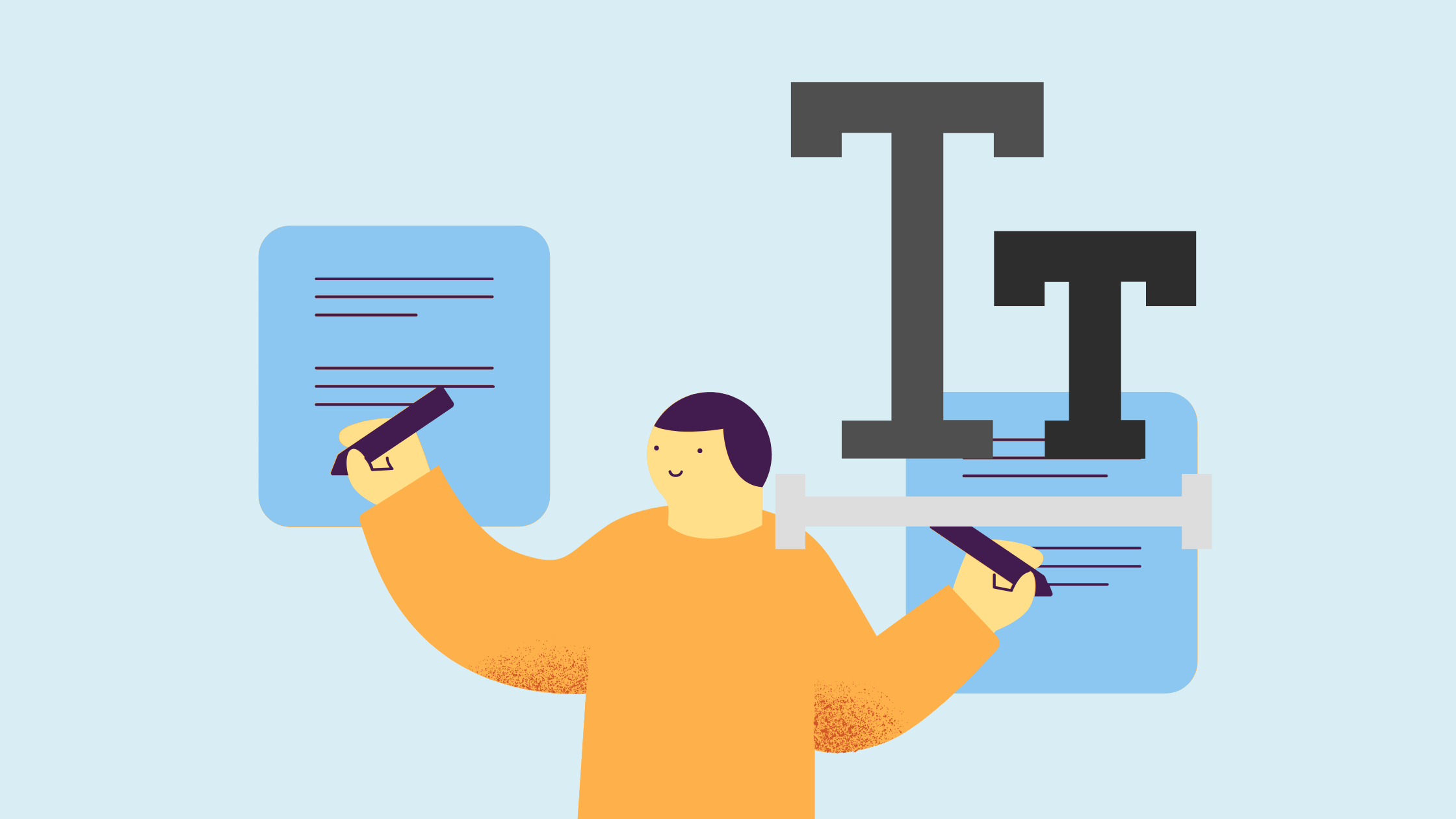Don't Just Type, Impress: A Copywriter's Guide to the Best Professional Fonts

Your font choice says more than you think. Discover our curated list of the best serif and sans-serif fonts to make your resume, presentation, or project look polished, professional, and powerful.
First, A Quick Lesson: Serif vs. Sans-Serif
Understanding this one simple distinction will make all your future design choices easier.
- Serif Fonts: These are the classic typefaces with little decorative "feet" or strokes at the ends of letters (like the font you're reading this in right now, probably!). They feel traditional, trustworthy, and are often considered easier to read in long blocks of printed text.
- Think: Books, newspapers, academic papers.
- Vibe: Classic, formal, elegant.
- Sans-Serif Fonts: "Sans" literally means "without." These fonts are clean, modern, and lack the little "feet" of their serif cousins. They excel on digital screens (like websites and presentations) and are fantastic for headlines.
- Think: Websites, logos, modern reports.
- Vibe: Clean, modern, approachable.
Now, let's get to the recommendations!
The Timeless Classics (Serif Fonts)
These are the tried-and-true choices that never go out of style. You can't go wrong with these for a resume or a formal report.
Garamond
Elegant, classic, and graceful. Garamond is a timeless choice that feels a bit more sophisticated than the standard options. It's lighter on the page and uses less ink, which is a neat bonus.
Georgia
Designed specifically for screen readability, Georgia has a friendly and inviting feel. Its letters are slightly larger and more spaced out than Times New Roman, making it a fantastic and modern alternative for body text.
Didot
If you want to convey luxury and high-fashion style, Didot is your font. With its dramatic contrast between thick and thin lines, it's best used for headings or short titles, not for the main body of your text.
Cambria
A modern serif font that was designed for on-screen reading, Cambria is a workhorse. It's sturdy, clear, and holds up well at small sizes, making it a reliable choice for any professional document.
The Modern & Clean All-Stars (Sans-Serif Fonts)
These fonts are the gold standard for presentations, digital portfolios, and modern-looking resumes. They are clean, crisp, and incredibly versatile.
Helvetica
Perhaps the most famous font in the world, and for good reason. Helvetica is the ultimate neutral. It's clean, corporate, and legible in almost any context. When in doubt, Helvetica is a safe—and stylish—bet.
Calibri
As the default font for Microsoft Office for many years, Calibri is familiar to everyone. It's soft, warm, and highly readable. While some may find it overused, its gentle and professional appearance is undeniable.
Lato
"Lato" means "summer" in Polish, and that perfectly captures its feel: friendly, warm, and approachable, yet still professional. It was designed to look transparent and "frank" in body text but shows its character at larger sizes.
Roboto
Developed by Google as the system font for Android, Roboto is the perfect blend of mechanical structure and friendly curves. It's optimized for UIs and mobile screens, making it an excellent choice for any digital-first project.
Open Sans
Commissioned by Google and a favorite among web designers, Open Sans is incredibly versatile and has excellent legibility on web and mobile. It's neutral but friendly, making it a superb choice for body text.
Montserrat
Inspired by the old posters and signs in the Montserrat neighborhood of Buenos Aires, this font is geometric, urban, and stylish. It shines as a heading font and brings a touch of modern sophistication.
A Few Pro Tips for Choosing Your Font
- Consider Your Industry: A graphic designer might get away with a more creative font like Raleway or Montserrat, while someone in finance or law should probably stick to a classic like Garamond or Helvetica.
- Test for Readability: Don't just look at the font in the dropdown menu. Type out a few sentences in the size you plan to use. Is it easy on the eyes? Or does it feel cramped or fuzzy?
- The Power of Pairing: A common and effective technique is to use a sans-serif font for your headings (like Lato or Montserrat) and a serif font for your body text (like Georgia). This contrast creates a clear visual hierarchy and makes your document easier to scan.
Your Font is Chosen—Now What?
A fantastic font is a crucial first step, but it's only one piece of the puzzle. For your resume, in particular, that perfect font needs to be paired with impeccable structure and content. After all, you want hiring managers focused on your achievements, not a confusing layout. If you're looking to tie everything together seamlessly, a professional builder like Resumost.com can ensure your entire document, from font to format, is polished and effective.
Ultimately, the best font is one that enhances your message without distracting from it. Choose wisely, and you'll be putting your best foot forward before they even read your name.
© 2025 Resumost.
We love that you're reading our work! Please note that this content is our own. If you'd like to share or re-post it, please reach out to us for permission first. Unauthorized scraping of this site is not permitted.


